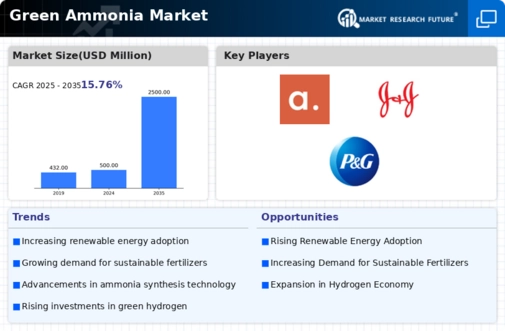Market Analysis
In-depth Analysis of Green Ammonia Market Industry Landscape
The market dynamics of the green ammonia sector are influenced by various factors driving its growth and shaping its landscape. Green ammonia, produced through renewable energy sources and sustainable methods, is gaining momentum as a viable alternative to traditional ammonia production, primarily due to its environmental benefits and versatility. One of the key drivers propelling the market is the increasing global emphasis on reducing carbon emissions and transitioning towards cleaner energy sources. As countries strive to meet their climate targets outlined in international agreements like the Paris Agreement, the demand for green solutions such as green ammonia continues to rise.
Furthermore, government policies and regulations play a significant role in shaping the market dynamics of green ammonia. Subsidies, incentives, and mandates aimed at promoting renewable energy and reducing greenhouse gas emissions create a favorable environment for the growth of green ammonia production and adoption. Governments worldwide are implementing measures to support the development of green ammonia infrastructure, such as funding research and development initiatives and offering financial incentives for renewable energy projects.
Technological advancements also contribute to the market dynamics of green ammonia. Innovations in electrolysis, which enables the production of green hydrogen, a key component in green ammonia production, are driving down costs and improving efficiency. Additionally, advancements in ammonia synthesis processes and storage technologies are enhancing the viability and scalability of green ammonia production, further fueling market growth.
The evolving energy landscape and shifting consumer preferences are also influencing the market dynamics of green ammonia. Businesses and industries are increasingly recognizing the importance of sustainability and are seeking eco-friendly alternatives to conventional products and processes. Green ammonia offers a sustainable solution for various applications, including fertilizer production, energy storage, and fuel for transportation, driving demand across multiple sectors.
Market dynamics are further shaped by factors such as investment trends, supply chain dynamics, and market competition. As investors increasingly prioritize sustainable investments, funding flows into green ammonia projects, supporting expansion and innovation in the sector. Additionally, the establishment of robust supply chains and distribution networks is essential for ensuring the efficient production and delivery of green ammonia to end-users. Market competition drives companies to innovate and differentiate their products and services, driving further growth and development in the green ammonia market.
However, the market dynamics of green ammonia also face challenges and constraints that must be addressed. Cost competitiveness remains a key barrier to widespread adoption, as green ammonia production is often more expensive than traditional methods. Addressing cost challenges through technological innovation and economies of scale is essential for driving down production costs and enhancing market competitiveness.
Moreover, the scalability of green ammonia production presents a significant challenge, as ramping up production capacity requires substantial investment in infrastructure and resources. Overcoming scalability constraints requires collaboration among stakeholders across the value chain, including governments, industry players, and investors, to support the development of large-scale green ammonia projects.







Leave a Comment